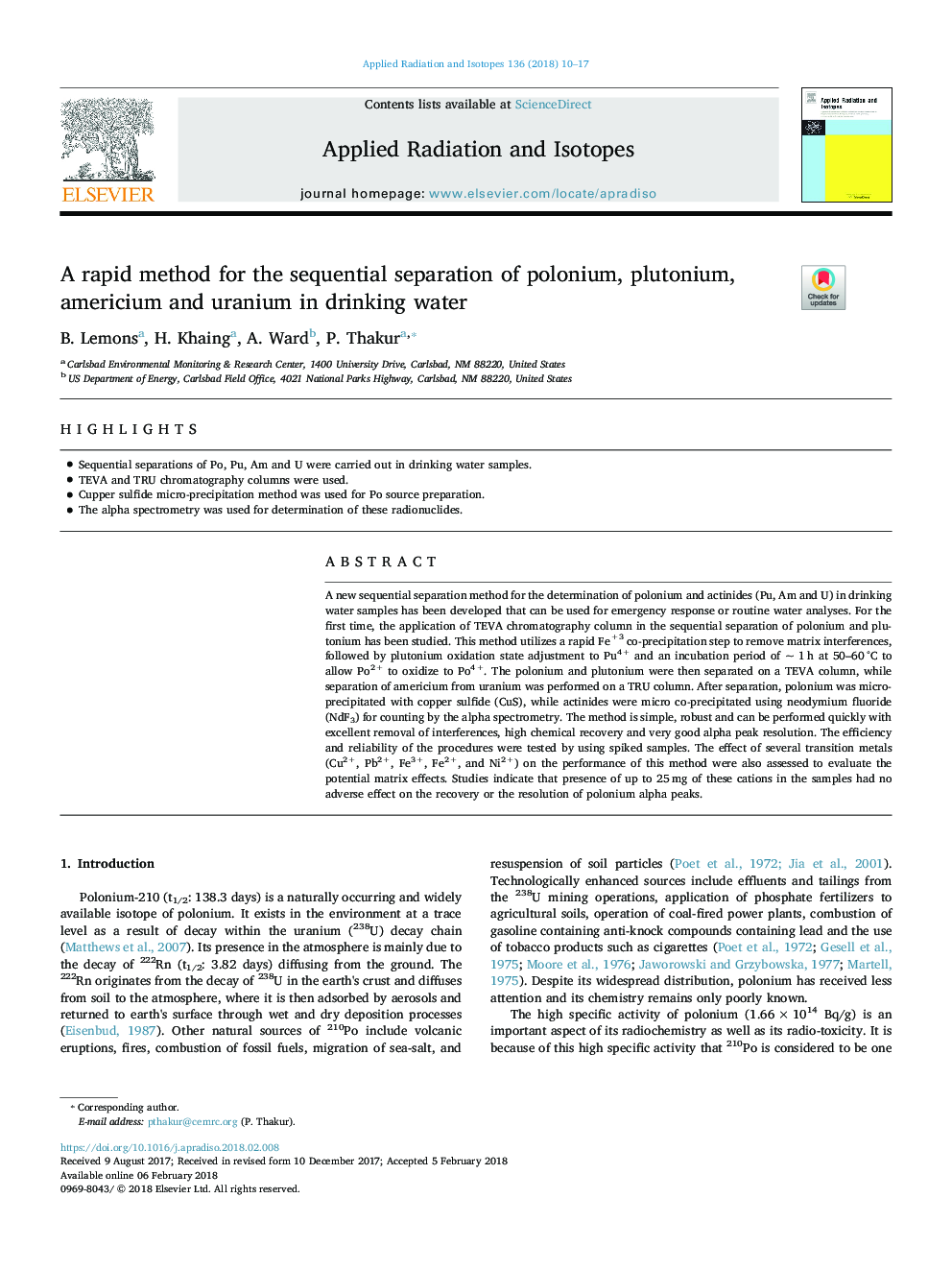| Article ID | Journal | Published Year | Pages | File Type |
|---|---|---|---|---|
| 8208573 | Applied Radiation and Isotopes | 2018 | 8 Pages |
Abstract
A new sequential separation method for the determination of polonium and actinides (Pu, Am and U) in drinking water samples has been developed that can be used for emergency response or routine water analyses. For the first time, the application of TEVA chromatography column in the sequential separation of polonium and plutonium has been studied. This method utilizes a rapid Fe+3 co-precipitation step to remove matrix interferences, followed by plutonium oxidation state adjustment to Pu4+ and an incubation period of ~ 1â¯h at 50-60â¯Â°C to allow Po2+ to oxidize to Po4+. The polonium and plutonium were then separated on a TEVA column, while separation of americium from uranium was performed on a TRU column. After separation, polonium was micro-precipitated with copper sulfide (CuS), while actinides were micro co-precipitated using neodymium fluoride (NdF3) for counting by the alpha spectrometry. The method is simple, robust and can be performed quickly with excellent removal of interferences, high chemical recovery and very good alpha peak resolution. The efficiency and reliability of the procedures were tested by using spiked samples. The effect of several transition metals (Cu2+, Pb2+, Fe3+, Fe2+, and Ni2+) on the performance of this method were also assessed to evaluate the potential matrix effects. Studies indicate that presence of up to 25â¯mg of these cations in the samples had no adverse effect on the recovery or the resolution of polonium alpha peaks.
Related Topics
Physical Sciences and Engineering
Physics and Astronomy
Radiation
Authors
B. Lemons, H. Khaing, A. Ward, P. Thakur,
